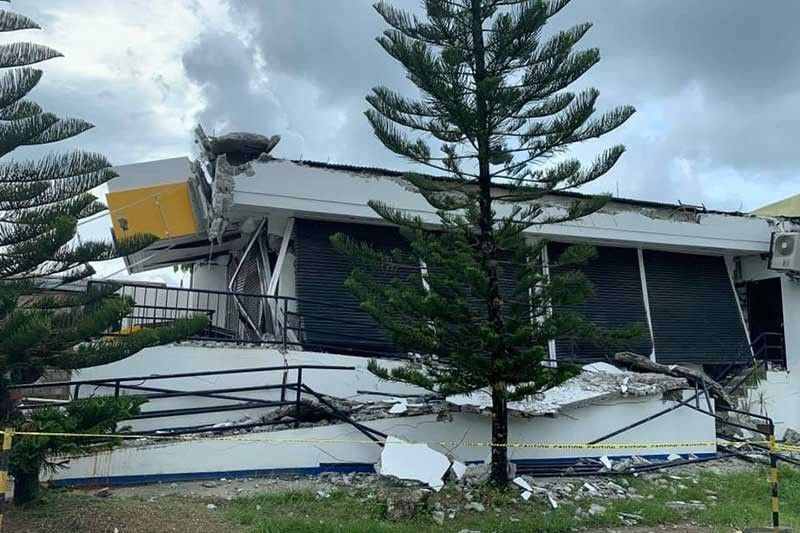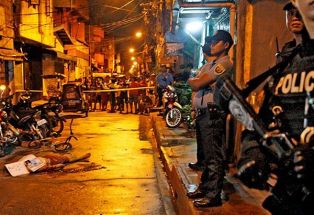House eyes review, update of building code

MANILA, Philippines — The House of Representatives will update the martial law-era National Building Code in the aftermath of the deadly and destructive Mindanao earthquakes, Speaker Alan Peter Cayetano said yesterday.
“I think it’s about time we take three drastic steps. Number one, review and update the building code; number two, make sure that the body implementing it is separate from the body monitoring compliance with it,” he told reporters.
He said the official evaluating and approving building plans should be different from the officer who inspects the building and checks compliance.
This plan comes on the heels of a magnitude 6.6 earthquake that shook several areas in Mindanao the other day, killing seven persons in North and South Cotabato and Davao del Sur and injuring scores of others in various parts of the region, almost two weeks after a deadly temblor hit the same area.
The quake occurred at 9:04 a.m. and was felt strongest in Tulunan and Makilala, Cotabato; Kidapawan City and Malungon, Sarangani.
Cayetano said the House would assess whether the old construction standards are still appropriate for the risks the country is facing from natural disasters.
“And then lastly, it’s time to put urban planning as a department in local government units (LGUs),” he added.
Cayetano stressed the importance of such an office, which he pointed out would take care of a long-term development roadmap for a city or town, including housing and roads.
“In Taguig City, we have an urban planner. We are planning section by section, aside from planning for the entire city,” he said. His wife Lani served as mayor of Taguig City for nine years.
He said if a city or town mayor is voted out of office after one term or three years, there would be an “institutional memory on development plans if you have an urban planner.”
He said aside from engineers, architects should be involved in enforcing the building code and in LGU planning.
The present code is contained in Presidential Decree No. 1096, issued by then president Ferdinand Marcos on Feb. 19, 1977.
Deputy Speakers Mikee Romero of 1-Pacman and Aurelio Gonzales Jr. of Pampanga have filed separate but similar bills that seek to regulate the planning, design, construction, occupancy and maintenance of public and private buildings, including homes and government infrastructure projects, by enacting a new building law.
Romero said he would ask the House committee on public works and highways to prioritize the bills “to partly reduce disaster risks, especially death and destruction when earthquakes or other calamities happen.”
“It is abundantly clear that poor compliance with the National Building Code is part of the systemic reason for the deaths, injuries and widespread damage in Mindanao because of the magnitude 6.6 earthquake on Tuesday and the magnitude 6.3 quake last Oct. 16,” he said.
He said his bill details all prohibited acts and provides for penalties for violations by any person involved in planning, design, construction, occupancy and maintenance of a building.
Aside from fines, a violator faces a prison term of up to six years, he added.
Gonzales, a civil engineer and contractor before seeking public office, said construction standards have to be reviewed and updated “to safeguard life, health, property and public welfare.”
He said Congress has to pass a new building law “for the effective regulation of planning, design, construction, occupancy and maintenance of buildings and structures, the establishment of a permitting process based on their classifications, and the setting of reference standards in terms of health and safety and to promote accountability among stakeholders.”
Senate Majority Leader Juan Miguel Zubiri, meanwhile, asked yesterday local government units (LGUs) and concerned national agencies to coordinate and work together in auditing buildings and key infrastructure for possible retrofitting to protect lives during earthquakes.
He said the national government should instruct the National Disaster Risk Reduction and Management Council, together with Philippine Institute of Volcanology and Seismology and LGUs to do a thorough assessment of all infrastructure within their localities to check if the buildings and homes are still safe for use, and if they may be strengthened for possible earthquakes in the future.
“Those structures that don’t meet the building code should be condemned or strengthened. There should also be a thorough geo-mapping of geo-hazard areas prone to landslides so the communities can be warned if they are located in these danger zones,” Zubiri said in a statement.
He said the assessment should be mandatory and strictly enforced as what government has done during the Boracay cleanup.
- Latest
- Trending






























